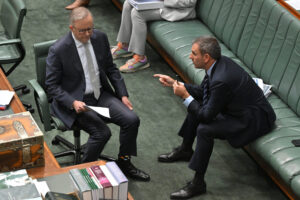As interest rates rise, the gains from negative gearing increase.
Despite rising interest rates, the latest figures from the Bureau of Statistics show that Australia’s house prices rebounded in the March quarter of this year. Policy director Greg Jericho writes in his Guardian Australia column that since the beginning of the pandemic property prices around Australia have risen 26% while at the same time average household disposable income has increased just 8%.
This disparity has massive consequences for affordability. Had for example the median property price in Sydney risen in line with household incomes since June 2020, instead of being $1.15m it would be $954,000 – a $196,000 difference.
Underlying the strength of the market even in the face of rising interest rates is the fact that Australia’s tax system is biased towards property investors.
The most recent taxation statistics covering 2020-21 showed for the first time the number of investors recording property net profits was greater than those recording a loss. Such a situation only occurred because of the record low interest rates at the time. We know that the past 12 months will have seen a large spike in the number of people negative gearing their properties and thus not surprisingly housing remains an attractive investment not in spite of rising interest rates, but because of rising interest rates.
You might also like
Opening statement to the ACTU Price Gouging Inquiry
This week Professor Allan Fels, the former head of the Australian Competition and Consumer Commission (ACCC), has begun an inquiry into price gouging across a range of industries, including banks, insurance companies, supermarkets, and energy providers. The inquiry commissioned by the ACTU comes off the back of the highest inflation in 30 years and the biggest falls in real wages on record.
Who’s hurting most from rising interest rates? It’s probably you.
Soaring house prices, high household debt and the pervasiveness of variable rate home loans mean that Australians bear the brunt of interest rate rises, says Greg Jericho.
The Stage 3 tax cuts will make our bad tax system worse
Australia has one of the weakest tax systems for redistribution among industrial nations, and as Dr Jim Stanford writes, the Stage 3 tax cuts will make it worse.



